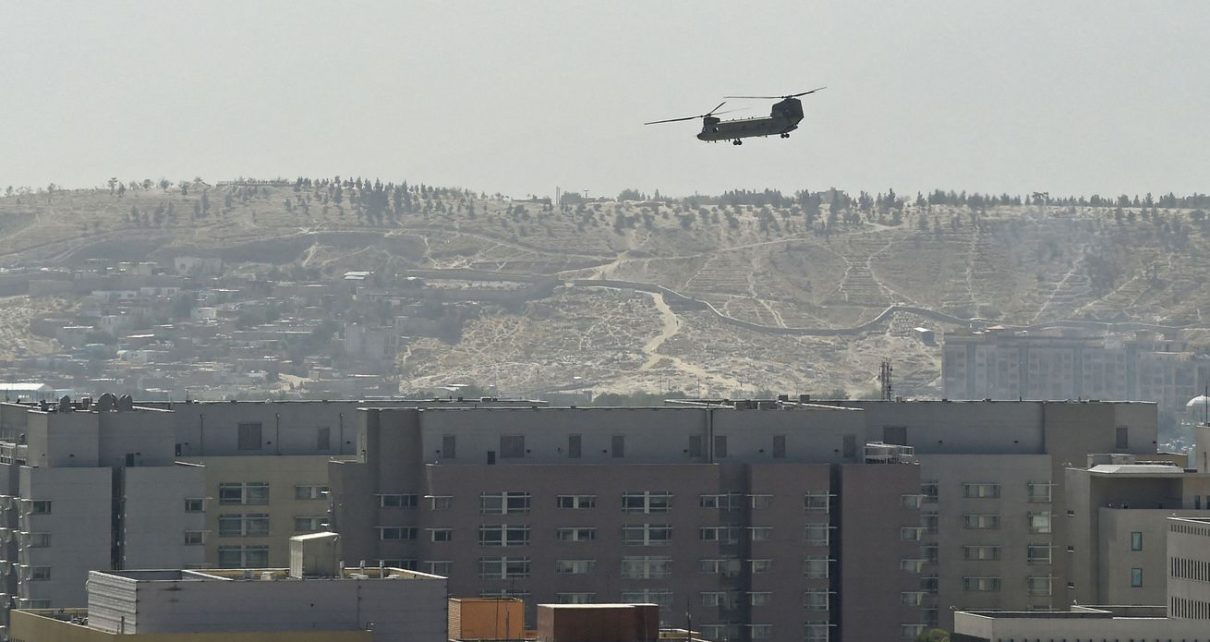
The collapse was the result of a demoralized military, Afghan officers say.
On Sunday morning, the Taliban successfully reached Afghanistan’s capital city, Kabul, following an accelerated sweep across the country, with the militant group quickly taking hold of the final government-controlled holdouts within the last week.
The Islamist militant group’s successful capture of the capital marks the final stages of the Taliban’s full takeover of the country. The Taliban has accelerated its operations to gain control over Afghanistan since last year’s Doha deal in Qatar between the insurgents and the US under former President Donald Trump, who agreed to a complete withdrawal of US military forces. As an August 31 deadline for US troop withdrawal drew near, the Taliban began a rapid seizure last week of outposts, towns, and cities, leading all the way to Kabul.
Most telling of the developments on the ground was perhaps the departure of President Ashraf Ghani, whose exit from the country on Sunday was confirmed by Abdullah Abdullah, Afghanistan’s top negotiating official, without mincing words. “The former Afghan president has left the nation,” Abdullah, the head of the High Council for National Reconciliation, said in a video announcement on Facebook. “He has left the nation in this state; [for that] God will hold him to account.”
In a separate, later announcement, Ghani said he left the country to avoid bloodshed as Taliban forces entered the presidential palace. By midday, a Taliban official announced the group’s plans to rename the state as the Islamic Emirate of Afghanistan.
KABUL, Afghanistan (AP) — Taliban official says they will soon declare the Islamic Emirate of Afghanistan from the presidential palace in Kabul.
— Zeke Miller (@ZekeJMiller) August 15, 2021
According to the Washington Post, the Taliban’s lightning insurgency over the last month saw the capture of major government-controlled cities. Kunduz was the first “key city” to fall to insurgents following days of negotiations led by tribal elders, resulting in its surrender, reported the Post. After that, it was almost like a domino effect — other major hubs like Kandahar and Herat fell to the Taliban through negotiated deals with local officials. These deals with the Taliban typically involved surrendering control of the cities in exchange for safe passage home or payoffs.
By early morning Sunday, Taliban forces had reached the government-controlled city of Jalalabad, where officials surrendered without a single shot fired. Soon, the remaining cities surrounding Kabul quickly fell into the insurgents’ hands. Taliban forces reached the capital’s gates within hours.
Civilian flights cannot leave the Kabul airport because people overwhelm the planes.
This Kam Air flight apparently couldn’t take off because hundreds of people have been trying to board pic.twitter.com/Q1HgT0gU5Y
— Ragıp Soylu (@ragipsoylu) August 15, 2021
While analysts didn’t expect the Taliban’s insurgency to succeed this soon, the group’s strategy to take control of the capital through peaceful negotiations instead of a violent offensive proved effective quickly. An exodus of residents and foreign diplomats began as the Taliban entered negotiations with Afghan officials.
Neighboring countries and allies have stepped in to help civilians evacuate the country — the United Arab Emirates’s foreign ministry said it would be facilitating the evacuation of foreign diplomats and staff through that country’s airports, while Germany has said it would send military planes to evacuate German nationals and Afghan support staff. US embassy employees and citizens scrambled to evacuate before the Afghan capital was taken.
/cdn.vox-cdn.com/uploads/chorus_asset/file/22784263/1234698415.jpg) Haroon Sabawoon/Anadolu Agency/Getty Images
Haroon Sabawoon/Anadolu Agency/Getty ImagesHow did the government collapse so quickly?
While the collapse of the Afghan government was precipitated quickly over the course of the last week, it was primarily born out of uncertainty created by talks held in Doha over a year and a half ago. The agreement was finalized in February 2020 between the US and the Taliban, confirming a full American withdrawal along with reduced allied forces.
US officials and Afghan military officials described a demoralized military following the Doha agreement, seeing the deal as the government’s guaranteed defeat against the Taliban. “They saw that document as the end,” an Afghan special forces officer told the Post, referring to government-aligned officials. “The day the deal was signed we saw the change. Everyone was just looking out for himself. It was like [the United States] left us to fail.”
Conditions within the Afghan military quickly deteriorated thereafter, exacerbated by a combination of corruption — many Afghan officers claimed they had not received salaries in months — and an attempt for survival against the Taliban, as US military presence began to shrink. In late July, President Joe Biden reiterated the US’s commitment to fulfilling the Doha agreement, guaranteeing a complete withdrawal of troops by August 31.
“We did not go to Afghanistan to nation-build,” Biden said. “It’s the right and the responsibility of Afghan people alone to decide their future and how they want to run their country.” Political observers have criticized the move, arguing that such an abrupt exit from Afghanistan could leave the country vulnerable to overthrow by the Taliban. Still, the deadline for withdrawal loomed.
As anxieties over the US’s exit grew, the Taliban began sending small groups of fighters to government-controlled rural outposts, striking deals with low-level representatives of the standing Afghan government through bribes or safety guarantees. Although Afghan officers say that the country’s elite military units remained committed to safeguarding the government holdouts, without support from local leaders and military personnel on the ground, their efforts to defend the country ultimately failed. What’s to be seen is how the now in-control Taliban manages the transition and handles political rivals and those it views as enemies.




